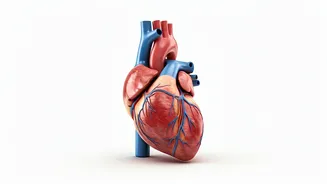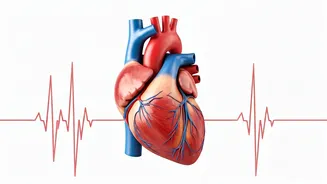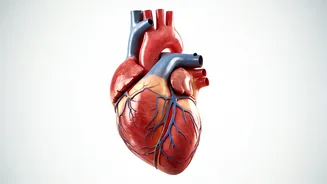Brisk Walking Benefits
Brisk walking, a time-tested exercise, offers numerous advantages for your heart. It's a readily accessible activity that requires no special equipment
and can be done virtually anywhere, anytime. When you walk at a pace slightly faster than your normal stroll, you're engaging your cardiovascular system. This simple act of walking elevates your heart rate, contributing to improved blood circulation and the efficient delivery of oxygen throughout your body. Regularly practicing brisk walking can help in lowering your blood pressure and decreasing the levels of bad cholesterol, which are key factors in reducing the risk of heart disease. To maximize the benefits, aim for at least 30 minutes of brisk walking most days of the week, steadily increasing the duration or intensity as your fitness improves. Consider incorporating varied terrains or inclines for added challenge and overall health improvements.
Tai Chi's Calming Effect
Tai Chi and Qigong, with their slow, controlled movements, provide a calming approach to heart health. These ancient practices focus on gentle movements and deep breathing, reducing stress and promoting relaxation. Stress is a significant contributor to heart problems, and Tai Chi's focus on mindfulness and meditation can help in regulating the stress response. The slow movements in Tai Chi improve circulation without straining the heart, making it safe for individuals of varying fitness levels. The practice also enhances flexibility and balance, lowering the risk of falls that may be harmful. To incorporate Tai Chi, consider finding a local class or following online tutorials. Consistent practice will offer noticeable benefits for both your physical and mental well-being, enhancing your heart health. Incorporating deep breathing exercises during your routine will further amplify the health advantages.
Swimming and Water Aerobics
Swimming and water aerobics are excellent low-impact exercises, perfect for those seeking to protect their joints while working out their heart. The buoyancy of water reduces the stress on your joints, enabling longer exercise durations. Swimming provides a full-body workout that strengthens multiple muscle groups, improving cardiovascular function. Water aerobics classes incorporate a variety of movements that boost heart rate and improve circulation, all within the safe environment of a pool. These aquatic activities are also effective in increasing lung capacity and improving overall endurance. To get started, locate a local pool with classes or simply enjoy swimming laps. Adjust the intensity based on your fitness level, gradually increasing the duration and pace. Regular participation in these exercises will result in significant benefits to your heart and overall health.
Gentle Yoga's Power
Yoga, particularly gentle forms, is a great exercise for heart health. It blends physical postures (asanas), breathing techniques (pranayama), and meditation. This combination is effective in reducing stress, improving flexibility, and strengthening the cardiovascular system. Yoga’s emphasis on mindfulness helps lower stress hormones, like cortisol, which can negatively impact heart health. Certain yoga poses can improve blood flow and circulation, ensuring the heart receives adequate oxygen. Breathing exercises in yoga, such as deep diaphragmatic breathing, can calm the nervous system, lower blood pressure, and improve heart rate variability. To enjoy the benefits of yoga, look for beginner-friendly classes or follow online tutorials. Regular practice will help cultivate a sense of calm and well-being, while also contributing to the strengthening of your heart health.
Cycling for Cardio
Cycling, be it indoors or outdoors, is an outstanding cardio exercise that is kind to your joints. Cycling elevates your heart rate and strengthens the heart muscle without putting excessive pressure on your knees, ankles, or hips. It's an adaptable activity; you can control the intensity by changing your pace or the resistance on your bike. Regular cycling improves cardiovascular health by improving blood flow, lowering cholesterol levels, and reducing the risk of heart disease. Indoor cycling classes provide structured workouts in a group setting, which can improve motivation. When cycling outdoors, ensure you wear safety gear and select safe routes. Start with shorter rides and progressively increase the duration and intensity as your fitness improves. Aim for at least 30 minutes of cycling most days of the week to maximize the advantages to your heart health and overall fitness.
Dancing into Fitness
Dancing is a fun, engaging, and often overlooked form of exercise that's exceptional for heart health. Any type of dance, whether it's Zumba, ballroom, or freestyle, engages your whole body, improves cardiovascular function, and boosts your mood. Dancing increases your heart rate and strengthens the muscles, which aids in blood circulation and overall cardiovascular health. It's a joyful way to stay active, with varied dance styles offering something for all interests and fitness levels. Regularly dancing will help burn calories, improve balance and coordination, and increase your stamina. To start, you could join a dance class, follow online tutorials, or just dance to your favorite music at home. Incorporating dancing into your routine will not only improve your heart health, but also inject fun into your fitness regimen.
Consistent Habits Sustain
To successfully improve your heart health, it is essential to build consistency in your exercise routine. Start by setting achievable goals, such as exercising for a certain duration or frequency each week. Tracking your progress, whether by keeping a fitness journal or using a mobile app, can help you stay motivated and monitor your achievements. It's also important to make exercise enjoyable; find activities you genuinely like doing, this will make it easier to stick to your routine. Varying your exercises and incorporating different types of activities prevents boredom and helps work different muscle groups. Make exercise a non-negotiable part of your schedule, treating it like an important appointment. By creating a sustainable routine, you'll be more likely to maintain a healthy lifestyle and achieve long-term improvements in your heart health.











